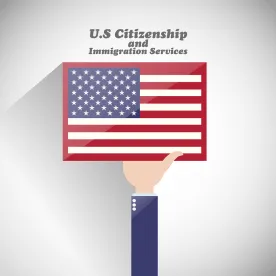On Jan. 21, 2016, USCIS published a new Policy Memorandum seeking to provide guidance regarding the scope of evidence eligible to be considered in the adjudication of certain O-1 petitions. The comment period to the memo, PM-602-0123, ends on Feb. 22, 2016.
By way of background, the O-1 visa category is available to those individuals sponsored by a U.S. employer or agent that possess extraordinary ability in the sciences, arts, education, business, or athletics, or those that have a demonstrated record of extraordinary achievement in the motion picture or television industry. One can qualify for an O-1 visa if he or she “has been nominated for, or has been the recipient of, significant national international awards or prizes in the particular field such as an Academy Award, an Emmy, a Grammy, or a Director’s Guild Award.” These applicants (think of people like Paul McCartney, Steven Hawking, Malala Yousafzai, etc.) have a relatively easy path to qualifying for an O-1 visa.
But for the vast majority of prospective O-1s that have not achieved such an award, there is another route. The O-1 regulations allow one to qualify for the visa by meeting at least three enumerated criteria, generally focusing on the applicant’s contributions and peer/media recognition in his/her field. For O-1A (sciences, arts, education, business, and athletics) and certain O-1B (arts) petitions, petitioners can also include “other comparable evidence” where the enumerated criteria do not “readily apply to [an] occupation”. But what does that mean in practice?
Let’s imagine an O-1A for a lawyer that won particularly lucrative cases, but they were too niche to generate “published material in professional or major trade publications or major media about” her as required by the regulation. These hypothetical cases also do not have the precedential value to be “…contribution[s] of major significance in the field.” Suppose instead, the lawyer wanted to demonstrate her eligibility for the visa with “other comparable evidence,” in this case, the value of the judgments won for clients who might be relatively unknown. Could she do so only if showing that none of the regulatory criteria apply to her candidacy? A majority do not? One does not?
In other words, is the ability to use “other comparable evidence” a ‘catch-all’? Or is it only reserved for those out-of-left field kinds of cases that USCIS could not think of when they were writing the regulations? The ambiguity confused stakeholders and adjudicators alike. The draft memo attempts to resolve this issue, and fortunately it allows greater flexibility in qualifying for the O-1.
Under the memorandum, a “petitioner must only show that a particular criterion does not readily apply to the beneficiary’s occupation before a petitioner may offer comparable evidence with regard to that criterion. The petitioner does not have to show that all or a majority of the criteria do not readily apply before comparable evidence may be considered.” Specifically, a petitioner must explain why a criterion does not readily apply, and why alternative evidence is comparable.
Taking the lawyer example above, a petitioner might thus be able to argue that there may not be readily applicable “nationally or internationally recognized prizes or awards for excellence” in lawyering; instead the financial rewards to her clients earned in the courtroom are more probative of her abilities.
The USCIS draft memo seems to be a step in the right direction, and hopefully will allow for even greater flexibility following the comment period.


 />i
/>i